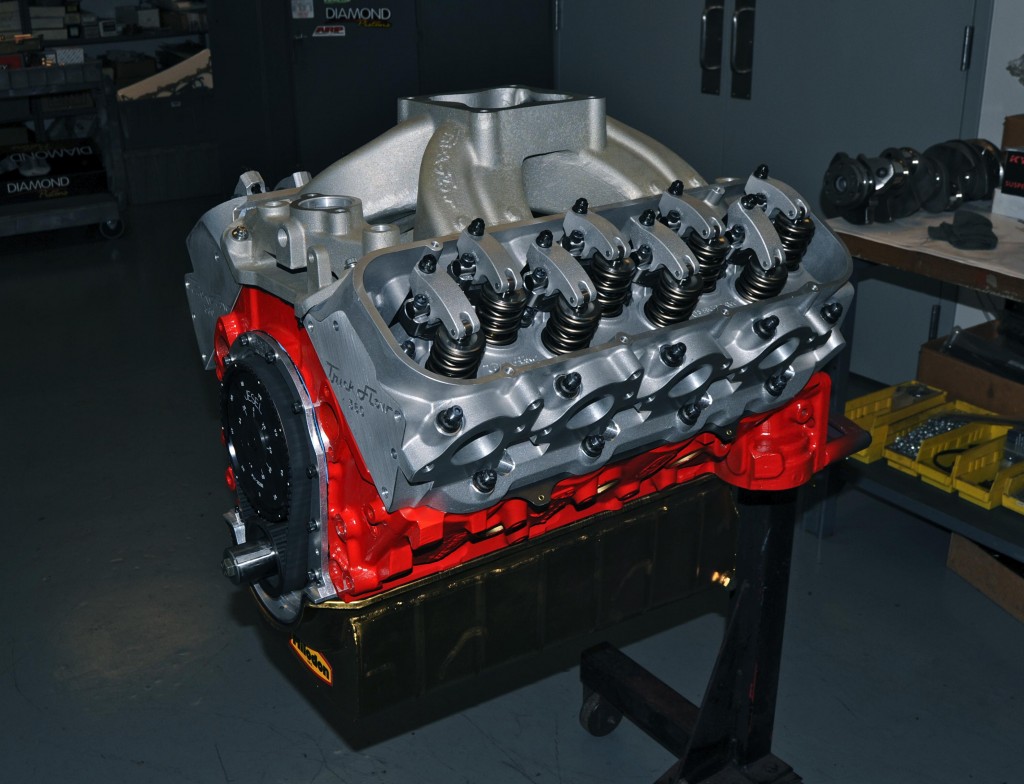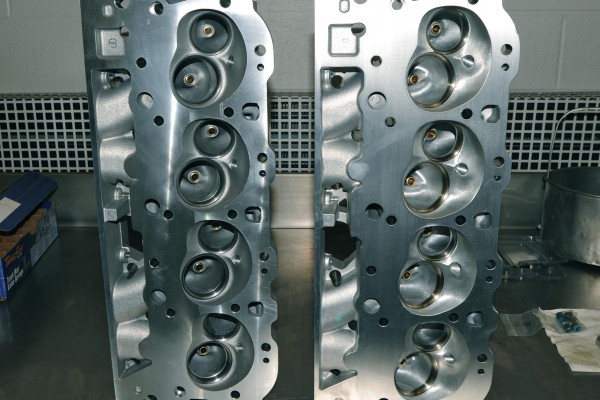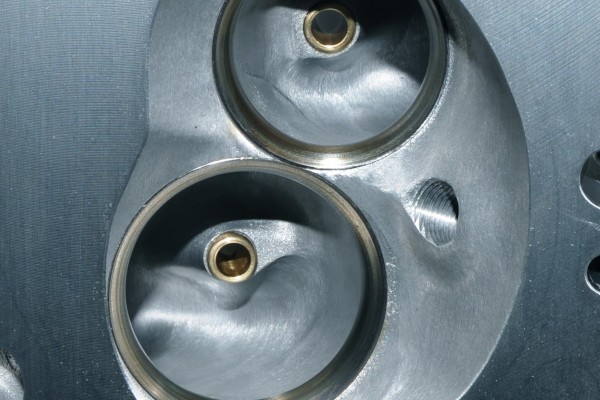In our first Top Class 565 post, we outlined the short block assembly for the 565 cubic inch big block that will be part of the prize package awarded to the 2012 Summit Racing SuperSeries Top Class Champion.
The 565 is being built by the cylinder head experts at Trick Flow Specialties. With a large 4.600-inch bore, 4.250-inch stroke, and a 6.535-inch rod, the 565 can make large amounts of horsepower and torque, yet uses readily available parts and requires minimal machine work. Better yet, the 565 is adaptable to many IHRA sportsman and bracket classes.
We also dropped a hint that the cylinder heads for this engine will be pretty special. In this post, we will reveal what’s behind the one-off Trick Flow PowerPort® cylinder heads as well as document the valvetrain assembly, intake manifold install, and oil system installation.
The Pro Stock Connection
Considering the horsepower and rpm goals of the 565, the cylinder heads are cirtical. Trick Flow’s best offering for big block Chevy is the PowerPort® 360 cylinder head. The PowerPort 360 (part number TFS-4141T808) features:
- Heart-shaped 122cc combustion chambers with 2.300/1.880-inch valves
- 360cc intake/137cc exhaust Fast As Cast runners—near CNC-ported
performance in an as-cast design - Exhaust ports raised .300-inch from stock
- CNC-bowl blended valve seat transitions and 24-degree valve angles
Trick Flow knew the PowerPort 360 needed some enhancements to feed 565 cubic inches of race engine, so they turned to someone that knows their way around cylinder heads—current NHRA Pro Stock Champion Jason Line.
Active in KB Racing’s engine development and tuning programs, Line can’t resist the challenge of making something run faster, flow better, or make more power. He made some revisions to the intake ports and did a bit of work on the combustion chambers to help give the incoming air and fuel a more direct shot at the valves—no trickery or fancy port work involved.
Check out the progress on the cylinder heads, valvetrain, and top-end components in the Slide Show below. Then, be sure to look for our final installment of Top Class 565, when we’ll bolt on the remaining accessories, strap the 565 to Trick Flow’s Superflow dyno, and let ‘er rip.
You’re gonna want to see what happens…stay tuned!
Parts List
TFS-4141T808: Trick Flow PowerPort 360 Cylinder Heads*
JES-KSS-248080: Jesel Sportsman Series Shaft Rocker Arms, 1.8 ratio
CCA-892C-1: COMP Cams Endure-X Roller Lifters, .904 In. Diameter, set of 16
CCA-819-L: COMP Cams Roller Lifter Link Bars
TFS-21418450-8: Trick Flow Pushrods, Intake, set of 8
TFS-21419250-8: Trick Flow Pushrods, Exhaust, set of 8
ARP-235-4303: ARP Head Stud Kit
CGT-C5331-040: Cometic MLS Head Gaskets
TFS-41400111: Trick Flow R-Series Intake Manifold
MRG-121: Mr. Gasket Intake Manifold Gaskets
MIL-31176: Milodon Oil Pan
MIL-18760: Milodon High-Volume Oil Pump
MIL-18202: Milodon Oil Pump Pickup
MEL-IS-77:Melling Oil Pump Drive
FEL-1804: Fel-Pro Oil Pan Gasket Set
ARP-535-9501: ARP Engine Accessory Bolt Kit
*NOTE: Part number is for unmodified heads—custom port work not included


















[…] Top Class 565 (Part 2): Trick Flow's Big-Cube Rat Receives Its Top … […]